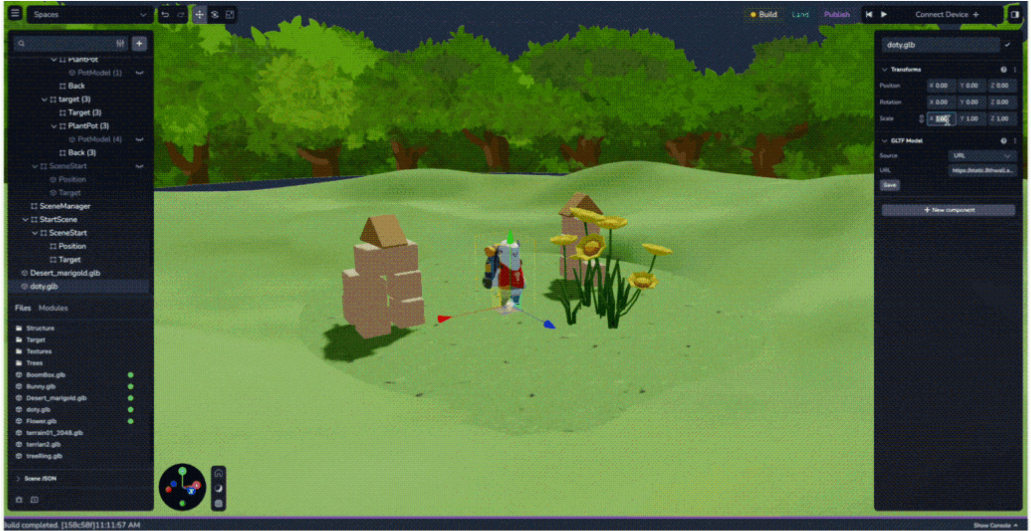 EMERGING TECH
EMERGING TECH
 EMERGING TECH
EMERGING TECH
 EMERGING TECH
EMERGING TECH
Augmented and virtual reality platform developer Niantic Inc., the company behind the popular AR game “Pokemon Go,” today announced the launch of a new visual interface for developers that will help them create 3D and mixed reality games with greater ease.
The company announced the new free-to-use software development platform, Niantic Studio, during Augmented World Expo 2024 and showcased updates to tools for scanning real-world objects and locations with an aim to blend the virtual and real worlds together.
Niantic said that traditionally, building web-based XR and 3D experiences can be rough because it’s a largely code-intensive process. A developer changes a piece of code, loads it up and then looks at the changes – there’s very little visual feedback while building. Niantic Studio, now in public beta mode, fixes this with a visual editor that provides a real-time, interactive responsive “what-you-see-is-what-you-get” experience.
“Each action you take — from adding or adjusting assets in a 3D space to real-time scene manipulation — is reflected instantly,” the Niantic team said in the announcement. “Every tool and feature within Studio is just a click away.”
Interactivity is easy to build in with tools available for developers to plug in with physics, cameras, lighting, animation, particles, audio, game triggers and more, available with just a few clicks. Studio also includes a new gaming engine designed to aid developers with complex development tasks, including interaction and gameplay for XR projects.
With “Play Mode,” built scenes can be edited and previewed in action. This allows developers to update and change the underlying code while understanding how it will affect the physics, visuals and other elements of their 3D apps without having to leave the editor.
As a web-based tool, Niantic Studio is connected to 8th Wall and has all of the tools and services needed to publish and share anything created with other members of the team and the public. This opens up a huge community of other developers to help with technical support and to work on the project from anywhere in the world.
Niantic also announced fast scanning capability for Scaniverse, which will use the gaussian splatting technique as an output option, a volume rendering technique that allows for extremely fast scans of real-world objects that can be shared from phones. Scaniverse is a 3D mobile scanning application that allows users to quickly scan real-world objects using just their smartphone that Niantic acquired in 2021. Soon, Niantic Studio will allow users to add or edit these 3D assets tied precisely to real-world locations around the world.
At the core of being able to lock 3D objects to real-world locations is Niantic’s Visual Positioning System, or VPS, which features centimeter level precision. Currently VPS features over 250,000 mapped locations, mostly submitted by players of Niantic’s games. In recent months, the company’s mapping team improved its mapping pipeline to allow several thousand new locations to be added to the map every day and said it’s on track to reach 1 million locations in 2024.
Support our mission to keep content open and free by engaging with theCUBE community. Join theCUBE’s Alumni Trust Network, where technology leaders connect, share intelligence and create opportunities.
Founded by tech visionaries John Furrier and Dave Vellante, SiliconANGLE Media has built a dynamic ecosystem of industry-leading digital media brands that reach 15+ million elite tech professionals. Our new proprietary theCUBE AI Video Cloud is breaking ground in audience interaction, leveraging theCUBEai.com neural network to help technology companies make data-driven decisions and stay at the forefront of industry conversations.